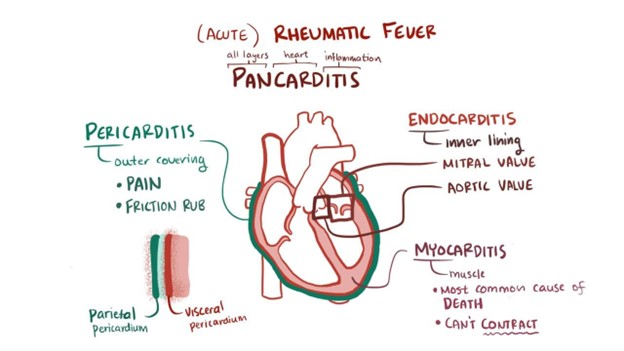A nurse is caring for a child who has acute appendicitis. Which of the following results should the nurse anticipate when reviewing this client's laboratory values?
RBC 4.2 million/mm³
Lymphocytes 3,000/mm3
Neutrophils 3.000/mm³
WBC 17.000/mm3
The Correct Answer is D
When caring for a child with acute appendicitis, the nurse should anticipate an elevated white blood cell count (WBC) in the laboratory values. A high WBC count is a common finding in acute appendicitis, as it indicates an inflammatory response and infection in the body. The body's immune system responds to the inflammation caused by the infected appendix, leading to an increase in WBCs to fight off the infection.
The other options are not necessarily specific to acute appendicitis:
A. RBC 4.2 million/mm³: The red blood cell count (RBC) measures the number of red blood cells in the bloodstream. This value may be within the normal range, but it is not the primary marker for diagnosing or monitoring acute appendicitis.
B. Lymphocytes 3,000/mm3: Lymphocytes are a type of white blood cell involved in the body's immune response. While changes in lymphocyte levels can occur during inflammation, it is not the primary marker for diagnosing or monitoring acute appendicitis.
C. Neutrophils 3.000/mm³: Neutrophils are a type of white blood cell that increases in response to infection and inflammation. However, the absolute neutrophil count is not as relevant as the overall WBC count in determining the presence and severity of acute appendicitis.
Nursing Test Bank
Naxlex Comprehensive Predictor Exams
Related Questions
Correct Answer is C
Explanation
Rheumatic fever (RF) is a complication that can occur after an untreated or inadequately treated streptococcal throat infection (strep throat). It can affect the heart, joints, skin, and brain. One important aspect of managing RF is to prevent further episodes of strep throat, as it can trigger recurrent RF. Therefore, the child with a history of RF will require prophylactic antibiotics (usually penicillin or a related antibiotic) before certain invasive procedures, dental work, or surgeries to prevent strep throat and subsequent recurrence of RF.

Option A is not specific to rheumatic fever, and while electrolyte imbalances may be monitored and managed in certain cases of severe illness, it is not a core aspect of managing RF.
Option B is not accurate. While many children with RF do recover fully with appropriate treatment, they may be at risk of developing rheumatic heart disease, which can lead to long-term complications if not managed properly.
Option D is not a direct implication of RF. Rheumatic fever is not a genetically inherited condition, but a complication of strep throat caused by a bacterial infection. There is no evidence to suggest that having RF would directly affect the genetic implications for future offspring.
Correct Answer is ["5.3."]
Explanation
To calculate the dose of acetaminophen for a child, the nurse needs to convert the child's weight from pounds to kilograms and then multiply it by the prescribed dose per kilogram. The formula is:
Weight in kg = Weight in lb / 2.2
Dose in mg = Weight in kg x Dose per kg
Dose in mL = Dose in mg / Concentration in mg/mL
Using the given information, the nurse can plug in the values and solve for the dose in mL:
Weight in kg = 28 / 2.2 = 12.73
Dose in mg = 12.73 x 10 = 127.3
Dose in mL = 127.3 / 120 x 5 = 5.3
Therefore, the nurse should administer 5.3 mL of acetaminophen to the child.
Whether you are a student looking to ace your exams or a practicing nurse seeking to enhance your expertise , our nursing education contents will empower you with the confidence and competence to make a difference in the lives of patients and become a respected leader in the healthcare field.
Visit Naxlex, invest in your future and unlock endless possibilities with our unparalleled nursing education contents today
Report Wrong Answer on the Current Question
Do you disagree with the answer? If yes, what is your expected answer? Explain.
Kindly be descriptive with the issue you are facing.
